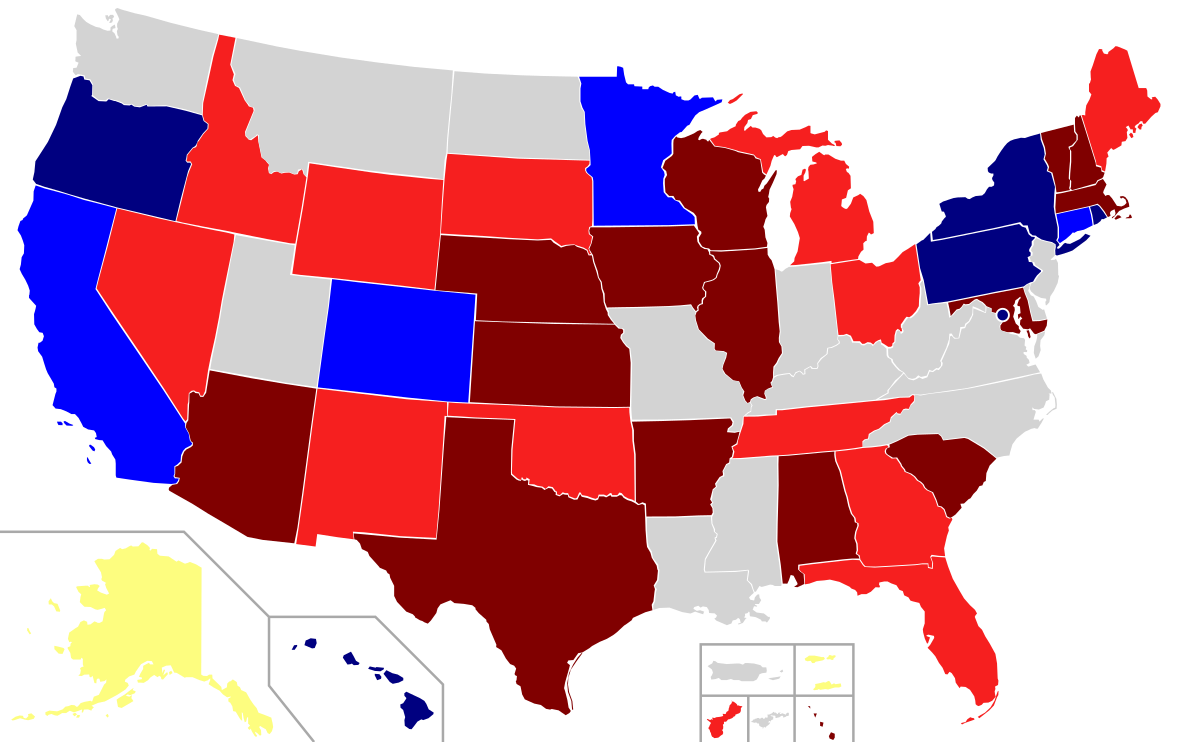2018 Elections: An Overview
Legal Planet: Environmental Law and Policy 2018-04-16

We would all like to think of law as insulated from day-to-day politics. That separation is difficult to maintain today, given the extent of polarization on environmental issues. It is worth looking ahead a few months, then, to see what the future may hold. With that in mind, I’ve collected a bit of information about what’s at stake in the off-year elections.
State Government
Governors: Currently (with number up for reelection in parentheses): 33 Republicans (26) 16 Democrats (9), and 1 Independent. Cook Political Report lists three of the current Democratic states as toss-ups, the others are leaning or likely Democratic. Cook lists five of the current republican states as toss-ups, and one as leaning Democratic. Governors, like Presidents, have the power to issue regulations even when they don’t control the legislature, to make appointments (though not necessarily on the same scale as Presidents), and to veto legislation (including potential gerrymanders). I will post more about the governors races soon.
Legislatures: With fifty state legislatures, it’s hard to get an overall perspective. Moreover, the significance of a shift in one branch of the legislature depends on who controls the other chamber and the governor’s mansion. For what it is worth, ballotpedia lists seventeen chambers as battlegrounds, with ten of those currently held by Democrats. Controlling even one chamber of a state legislature would allow Democrats to block anti-environmental legislation that would pass under Republican control.
U.S. Senate
The Democrats face a tough slog in the Senate. Twenty-six Democratic seats are up for reelections, five in states that Trump handily carried. Only eight Republican seats are up for reelection. To gain control of the Senate, the Democrats would need to keep all their own seats and pick up two new seats. Nate Silver explains just what an uphill battle the Democrats face:
“Just how bad is this map for Democrats? It’s bad enough that it may be the worst Senate map that any party has faced ever, or at least since direct election of senators began in 1913. It’s bad enough that Democrats could conceivably gain 35 or 40 seats in the House … and not pick up the two seats they need in the Senate.”
The worst-case scenario for the Democrats would be a nine-seat loss, which would give the Republicans a filibuster-proof majority. This seems unlikely as of now. It would make also much less difference, of course, if the House goes Democratic. But gaining even a few seats would make it easier for Mitch McConnell to put together majorities for Trump nominees.
U.S. House
Cook lists 29 Republican and 3 Democratic seats as toss-ups. The Democrats need 218 seats to control the chambers, which requires them to pick up 26 seats from their present 192. Thus, they need nearly all of the toss-up races. On average, the party out of power gains 23 seats in the first off-year election of a presidency, so a switch in control seems to be within reach. Control of the House would allow Democrats to add riders to must-pass bills, block legislation they don’t like, and engage in wide-ranging investigations of the Trump Administration. Democrats need a substantial popular vote margin to flip the House, in part because of gerrymandering and in part because too many of their voters are packed into urban districts.
Of these various races, the U.S. House races are the most pivotal, with a significant prospect of flipping control of one branch of the federal government. A good deal is at stake, with environmental protection high on the list.